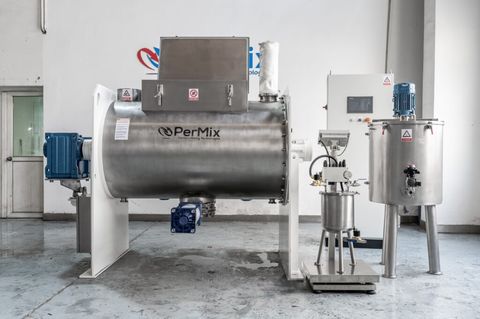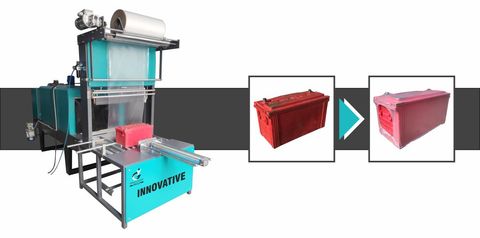With constant advancements in materials, software, and printer technology, filament 3D printing is evolving rapidly. This article will help you understand where the technology stands today, what innovations are shaping its future, and how users—from beginners to professionals—can make the most of it.
Benefits of Filament 3D Printing
Filament 3D printing has remained relevant due to a range of advantages:
1. Accessibility and Affordability
Most filament printers are relatively inexpensive, making them suitable for individuals, schools, and startups.
2. Material Variety
From PLA and ABS to TPU and PETG, the number of printable thermoplastics continues to grow, each with unique properties.
3. Ease of Use
FDM printers are straightforward to operate and maintain, especially with the rise of plug-and-play models.
4. Community and Open Source
There is a large, active global community supporting open-source designs, slicers, and printer modifications.
5. Functional Parts
Many users create durable, working prototypes or end-use components with the right material and settings.
Limitations to Be Aware Of
Despite its advantages, filament 3D printing also comes with some drawbacks:
-
Print Speed: FDM is slower than resin or industrial-grade methods.
-
Surface Finish: Layer lines are visible and require post-processing for a smooth finish.
-
Warping and Adhesion Issues: Some filaments need heated beds or enclosures to prevent warping.
-
Limited Resolution: FDM is generally not as precise as SLA or SLS printing.
Types of Filament 3D Printing
Different categories of FDM printers and filaments serve different needs:
1. Desktop FDM Printers
Compact and affordable for home or small office use.
2. Industrial FDM Printers
Larger build volumes, heated chambers, and support for advanced materials like carbon fiber or nylon composites.
3. Dual Extruder Printers
These enable multi-material or multi-color printing in a single job.
4. Specialty Filament Printers
Optimized to handle flexible, metal-infused, or high-temperature filaments.
Latest Trends and Innovations in Filament 3D Printing
1. High-Performance Filaments
Recent material innovations include carbon fiber-infused nylon, polycarbonate, and even PEEK (polyetheretherketone), used for demanding industrial applications.
2. Smart Printers
New printers feature auto-bed leveling, real-time print monitoring, filament sensors, and Wi-Fi connectivity.
3. AI and Machine Learning
Some software now uses AI to predict errors, optimize slicer settings, and recommend print parameters based on material type and design complexity.
4. Sustainable Filaments
Manufacturers are introducing biodegradable PLA variants and recycled PETG options to reduce environmental impact.
5. Modular and Upgradeable Designs
Open-source printers now support swappable extruders, magnetic build plates, and hotends for customization.
6. Hybrid Printing Systems
Some systems combine FDM with CNC milling or laser engraving for multifunctional use.
Key Features to Consider in a Filament 3D Printer
| Feature | Why It Matters |
|---|---|
| Build Volume | Determines the size of objects you can print |
| Nozzle Temperature | Important for high-temperature filaments |
| Bed Heating and Material | Affects print adhesion and warping |
| Layer Resolution | Influences the smoothness and detail of prints |
| Filament Compatibility | Enables flexibility in material choice |
| Connectivity | Wi-Fi, USB, or SD card for easy file transfer |
| Auto Bed Leveling | Ensures better first layers and reduces setup time |
| Enclosure | Needed for high-temp and sensitive materials |
Top Filament 3D Printer Brands and Solutions
Here are some well-regarded 3D printer manufacturers and their notable models:
| Brand | Notable Model | Build Volume (mm) | Approx. Price Range | Website |
|---|---|---|---|---|
| Prusa | Prusa i3 MK4 | 250 x 210 x 220 | $799 – $1,099 | prusa3d.com |
| Creality | Ender 3 V3 KE | 220 x 220 x 240 | $239 – $399 | creality.com |
| Bambu Lab | X1-Carbon | 256 x 256 x 256 | $1,199 – $1,449 | bambulab.com |
| Raise3D | E2 or Pro3 | Up to 300 x 300 x 300 | $2,000 – $5,000 | raise3d.com |
| Ultimaker | S5 | 330 x 240 x 300 | $5,995+ | ultimaker.com |
Note: Prices vary based on regions, upgrades, and availability.
How to Choose the Right Filament 3D Printer or Filament
Use the checklist below to guide your selection process:
Checklist: Choosing the Right 3D Printer
-
What is your budget?
-
What size of objects do you plan to print?
-
Do you need specific filament compatibility?
-
Will you be printing prototypes, tools, or decorative items?
-
Do you require dual extrusion for multi-materials?
-
Are you experienced or a beginner?
-
Will you need customer support or community resources?
Checklist: Choosing the Right Filament
-
Is the filament compatible with your printer's temperature range?
-
What strength or flexibility does your print need?
-
Is it for indoor or outdoor use?
-
Do you need food-safe, biodegradable, or chemical-resistant material?
-
Does the filament require a heated bed or enclosed chamber?
Tips for Optimal Printing and Maintenance
1. Store Filament Properly
Most filaments absorb moisture. Use airtight containers or filament dry boxes to preserve quality.
2. Calibrate Regularly
Regularly check your bed leveling, nozzle condition, and extrusion settings to avoid print failures.
3. Update Firmware and Slicer Software
Manufacturers often release updates that improve performance and compatibility.
4. Clean the Nozzle
A clogged nozzle can ruin prints. Periodically run cleaning filament or use needle tools for maintenance.
5. Use the Right Settings
Adjust layer height, temperature, and speed according to the filament type and model geometry.
Frequently Asked Questions (FAQs)
Q1: What’s the best filament for beginners?
PLA is considered the easiest filament for beginners. It’s inexpensive, environmentally friendly, and does not require a heated bed.
Q2: Can filament printing be used for functional mechanical parts?
Yes, especially with filaments like ABS, PETG, or carbon fiber-reinforced nylon, which offer better strength and durability.
Q3: Is it safe to use filament printers indoors?
Yes, but adequate ventilation is recommended, especially when printing with materials like ABS, which can release fumes.
Q4: How long does a print typically take?
It depends on the object size and layer height. A small object may take 1–2 hours, while larger prints may take over 10 hours.
Q5: Are 3D printed parts waterproof or heat-resistant?
Some filaments like PETG and polycarbonate offer water and heat resistance. However, sealing or coating may be needed for true waterproofing.
Conclusion: A Practical Outlook on the Future of Filament 3D Printing
Filament 3D printing continues to evolve from a prototyping tool to a mainstream method for creating everything from household items to medical devices. With advancements in materials, machine intelligence, and environmental sustainability, the technology is becoming more powerful and user-friendly.
Whether you're a casual maker, a student, or an engineer, understanding the changing landscape of filament 3D printing will help you make informed decisions. The key is to align your needs with the right printer, filament, and usage practices—so you can bring your ideas to life efficiently and effectively.





